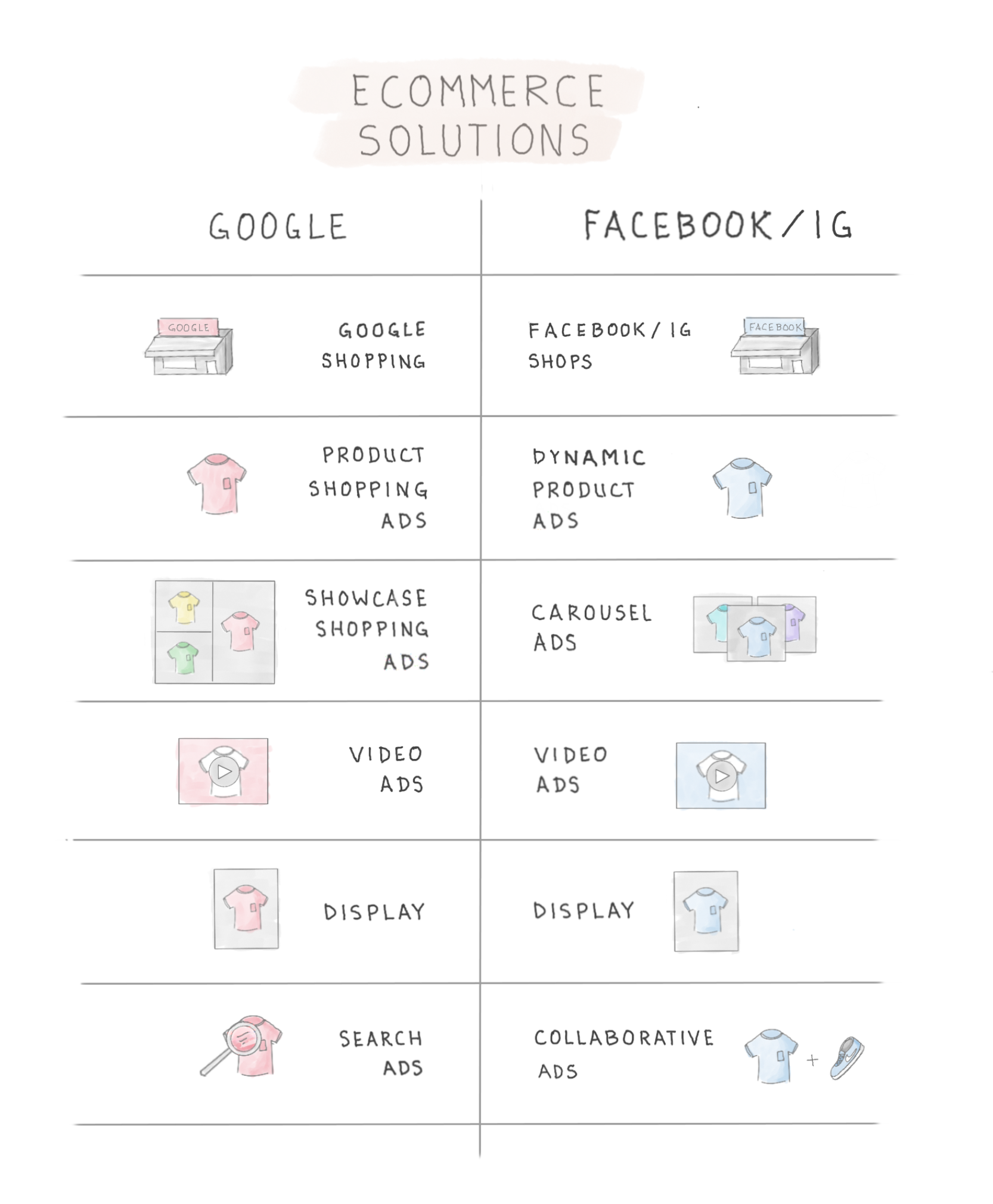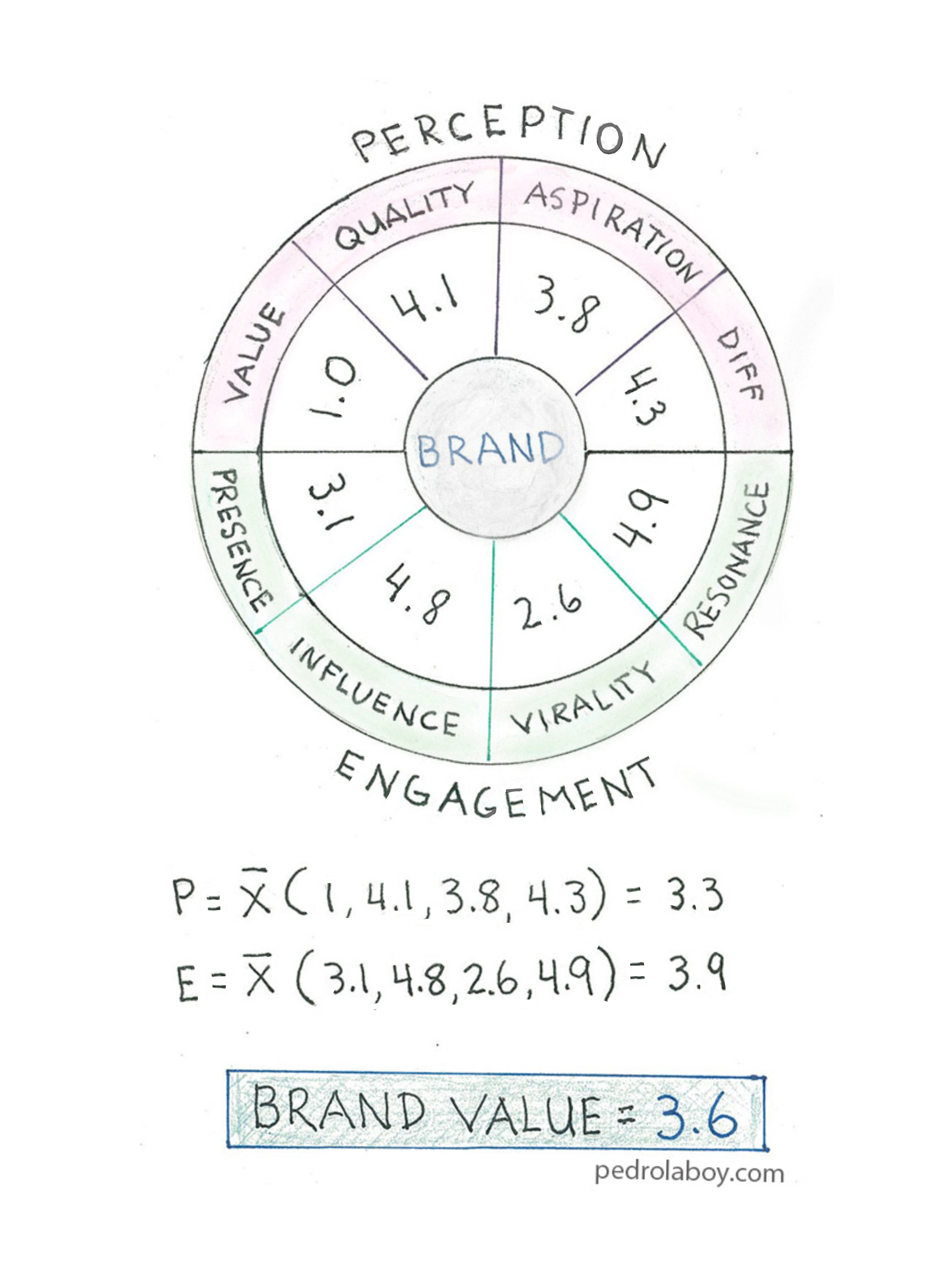This is simple guide of ecommerce advertising solutions offered by Google and Facebook / Instagram. There is, of course, a lot more to it than the brief descriptions provided below.
SHOPS: Googles Shopping is basically a shopping channel where products are searchable but transactions occur at the brand’s website. IG/FB shops are online stores where transactions can take place within the app or at the brand’s website
PRODUCT LISTINGS: Google Shopping Ads, also known as Product Listing Ads, are single product ad units. Facebook’s equivalent are the Dynamic Product Ads.
MULTI-PRODUCT LISTINGS: Showcase Shopping Ads and Carousel Ads are Google and Facebook’s respective product ad units that allows for the listing of multiple related or unrelated products.
VIDEO ADS: Video Ads on Google can be served on YouTube or across the Google Display Network. Formats vary and can include live-streaming. FB/IG’s video ads can appear in Feed or Stories and can also include live-streaming.
DISPLAY ADS: Google’s display ads can be served across the Google Display Network. Similar to video, FB/IG’s display ads can appear in Feed or Stories as well as through the Facebook Audience Network.
SEARCH ADS: Google Search Ads are ad units that appear alongside search results based on relevant keywords. They can include ad extensions which allow the brand to include product or business details.
COLLABORATIVE ADS: Facebook Collaborative Ads allow brands that sell products through retailers and merchants to run direct sales campaigns


